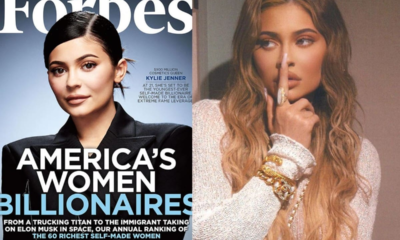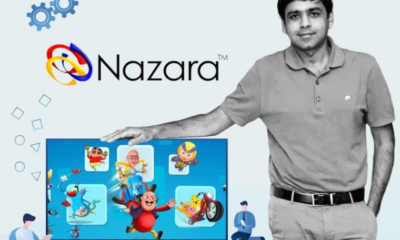Business
Rs 10,000 crore company Route Mobile

Today on toptalks : In 2008, Rajdip Gupta founded Route Mobile. Just four years later, a company was poised to acquire it for Rs 60 crore. The deal seemed almost finalized until Rajdip received an email detailing his “exit plan.” Unwilling to walk away from his creation so soon, Rajdip reconsidered and decided to back out. Fast forward a few years, and that same company approached him again, this time seeking to be acquired by Route Mobile. Rajdip’s decision to stick with his startup paid off in the long run—Route Mobile is now a publicly traded company with a market capitalization of approximately Rs 11,170 crore in 2024.
Rajdip’s journey with Route Mobile is a testament to perseverance, vision, and the importance of finding the right product-market fit. He believes that with the right approach, businesses can scale successfully even without external funding. “When I started working on my idea in 2003, the startup ecosystem in India was non-existent. The market was still reeling from the dot-com bubble burst in 2000,” Rajdip recalls. “But we looked ahead and identified a gap in the mobile handset market, which became the foundation for Route Mobile.”
India’s digital transformation over the past two decades has been extraordinary. With over 900 million internet users and being the second-largest smartphone market in the world, the opportunities for digital platforms like Route Mobile have grown exponentially. In 2004, India had just 33.7 million mobile customers—a number that surged to around 1.1 billion by the end of 2023. Rajdip’s foresight and timing allowed Route Mobile to thrive as businesses and enterprises fine-tuned their digital strategies.
Rajdip’s entrepreneurial journey began after he left a well-paying job in the UK to return to India, driven by a desire to create something of his own. His decision wasn’t easy, especially with two young children and an understandably cautious family. “I asked my family to give me a year to test my idea. If it worked, I’d continue; if not, I was confident I could find another job,” Rajdip explains. With just $2,000 (around Rs 1 lakh), Rajdip bootstrapped Route Mobile from scratch, even developing the initial platform himself on a second-hand PC at home. He also took the bold step of becoming the first customer of his product, testing and refining it before launching it to the market.
Route Mobile grew steadily from there. Rajdip always envisioned it as a global company, which led him to adopt a mergers and acquisitions (M&A) strategy to fuel international expansion. The company’s first acquisition was 365squared, a Malta-based SMS firewall solutions company. Several more acquisitions followed, extending Route Mobile’s reach into markets like Latin America. Rajdip’s focus on staying ahead of technology trends and his ability to adapt has been crucial to the company’s success. “We interact with customers daily, whether through mobile banking OTPs or WhatsApp notifications. Our group processes over 10-15 billion transactions each month,” he shares.
The rapid growth and scale of Route Mobile eventually set the stage for a public listing. Although the company’s initial attempt to list in 2018 faced a lukewarm response from investors, Rajdip didn’t give up. He restarted the IPO process during the pandemic, and in September 2020, Route Mobile successfully listed on the Indian stock exchanges at a 105% premium over the issue price. More than the financial success, Rajdip was deeply moved by the wealth-creation event that the IPO represented for his employees, including office attendants, some of whom found themselves with life-changing amounts in their bank accounts.
At the heart of Route Mobile’s success is its unwavering commitment to customers. “We exist because of our customers,” Rajdip says. “I attribute 100% of our success to our customers and our people.” Today, Route Mobile employs 1,500 people across 22 countries and has been profitable from day one. The company’s first customer, based in Dubai, was so satisfied with the product that they chose to pay for it instead of taking a free trial. Over the years, Route Mobile has built partnerships with major players like Meta and Google, and it now works with 1,000 operators, 300 of whom are direct partners, across Asia, Africa, and Latin America. In several markets, any communication by companies like Emirates, Google, or Amazon is powered by Route Mobile.
Looking to the future, Rajdip emphasizes the importance of innovation alongside customer loyalty. “Stickiness is good, but innovation is equally important,” he notes. This focus on staying ahead has led Route Mobile to continuously sharpen its competitive edge through acquisitions and new offerings. Rajdip advises other technology founders to always stay alert to emerging trends and changes in the market.
While Rajdip is deeply committed to scaling Route Mobile, he’s also passionate about nurturing the next generation of entrepreneurs. “Entrepreneurship is about creating more entrepreneurs,” he says. Rajdip has invested in ventures like Biryani By Kilo and established an incubation center in Virar, where 25 startups founded by entrepreneurs from tier 2 and 3 cities are building their ideas with a Rs 10 lakh grant from him.
Balancing work and life is a challenge for any entrepreneur, but Rajdip has found time to pursue his passion for cricket. Recalling how he was once denied a spot on his college cricket team due to a lack of spike shoes, he now owns several cricket grounds in Mumbai and co-owns the Chennai Singams team in the Indian Street Premier League. Cricket has become a metaphor for life for Rajdip, reminding him that setbacks are part of the game, but there’s always a second chance. “If you miss one opportunity in life, there is a second chance waiting for you. Don’t get disappointed,” Rajdip concludes—words that reflect his lived experience and enduring optimism.
Business
Kylie Jenner: The Rise and Fall of a Billionaire

Today in toptalks In May 2021, Forbes reported that Kylie Jenner was no longer a self-made billionaire. The publication claimed that Kylie had inflated the sales figures of Kylie Cosmetics, accusing her team of forging tax returns to boost her net worth. Consequently, Forbes revoked her billionaire status. Previously, Kylie had sold 51% of her company to Coty in a deal valued at $1.2 billion, earning an estimated post-tax income of $340 million. After further analysis, Forbes concluded that Kylie Jenner is “not a billionaire.”
Forbes had earlier placed Kylie on its annual World’s Billionaires list, naming her the world’s youngest self-made billionaire in 2020, just before the COVID-19 pandemic. Despite this, her ‘self-made’ status sparked controversy due to her wealthy, reality TV-famous background.
Early Life
Kylie Kristen Jenner was born on August 10, 1997, in Los Angeles, California, to Kris and former Olympic gold medalist Bruce Jenner. She has an elder sister, Kendall Jenner, and several half-siblings, including Kourtney, Khloé, and Kim Kardashian. Since childhood, Kylie has been in the spotlight, with paparazzi closely following her family’s every move.
Growing up, Kylie was featured in the reality series Keeping Up With The Kardashians alongside her famous siblings. She attended Sierra Canyon School and later earned her high school diploma from Lauren Springs High School in California. Additionally, Kylie built a massive social media following, and in 2015, Time magazine named her one of the Most Influential Teens.
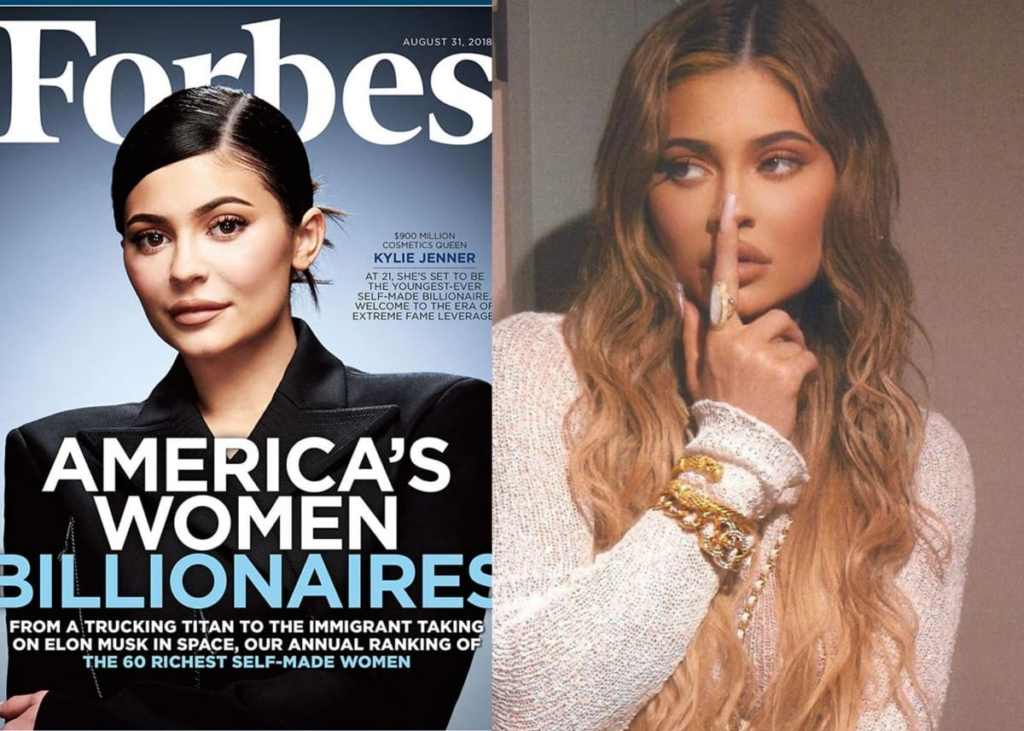
Career Highlights
The Kardashian family is one of the most widely followed in the entertainment world. While Kim Kardashian initially dominated the limelight, Kylie Jenner has recently emerged as a significant figure in the family. Leveraging her family’s fame, Kylie launched several business ventures, including her successful cosmetics line.
Kylie began her on-screen career in 2007 as a main cast member in Keeping Up with the Kardashians. She also appeared in various spin-off shows centered around her sisters, Kourtney and Khloé. In 2011, Kylie earned substantial income by endorsing two nail lacquers from the Nicole by OPI brand. She and Kendall also launched ‘The Kendall & Kylie Collection’ with PacSun in February 2013.
In June 2013, Kylie and Kendall launched the ‘Metal Haven by Kendall & Kylie’ clothing and jewelry line. They later collaborated with Steve Madden on a shoe and handbag collection. This overwhelming reception led to Kylie’s appearance in music videos, further boosting her fame.

Her rising popularity on social media platforms like Instagram and Snapchat played a crucial role in her growth. In 2015, Kylie launched her hair extension line, ‘Kylie Hair Kouture’, and became the second ambassador for the skincare line ‘Nip + Fab’. She also became the face of PUMA in 2016. That same year, she and Kendall launched their clothing line with Topshop. In September 2015, Kylie debuted her website and lifestyle app, alongside her lipstick line, ‘Kylie Lip Kit’.
Kylie’s career reached new heights when she expanded her cosmetics line into a full-fledged brand, Kylie Cosmetics. She invested $250,000 of her own money from modeling gigs in 2015 to produce the first batch of 15,000 lipsticks, which sold out within seconds. Her extensive media presence played a pivotal role in the brand’s success, with her millions of social media followers serving as a ready market.
Kris Jenner, Kylie’s mother, supported her by helping with strategies and tactics. Together, they sold 500,000 kits in record time. Kylie’s business quickly became a massive success. In November 2019, Kylie sold 51% of Kylie Cosmetics to beauty giant Coty Inc. for $600 million. The deal valued her business at about $1.2 billion. The sale, combined with her remaining 49% stake, initially made Kylie one of the world’s billionaires.
In March 2019, Forbes recognized Kylie as the youngest-ever self-made billionaire. At just 21 years old, she surpassed the record set by 23-year-old Mark Zuckerberg. Not slowing down, she launched her Kylie Skin skincare line in May 2019.
In April 2020, Forbes once again included Kylie in its World’s Youngest Billionaires list, recognizing her billion-dollar fortune. However, after reviewing filings related to her deal with Coty Inc., Forbes determined that Kylie had inflated sales figures. As a result, she was removed from the billionaire list.
Philanthropic Work
Kylie Jenner has actively contributed to fighting the COVID-19 pandemic. She donated $1 million to purchase protective equipment for first responders. In March 2020, after a request from the U.S. Surgeon General, Kylie urged her 169 million Instagram followers to practice social distancing.
Additionally, Kylie and her mother, Kris Jenner, announced a mass hand sanitizer donation to hospitals in Southern California. Their custom product, created in collaboration with Coty Inc., was dedicated to supporting first responders during the pandemic. Coty, a major stakeholder in Kylie Skin and Kylie Cosmetics, produced Kylie’s hand sanitizer in its factories to address the shortage faced by medical professionals.
Beyond the pandemic, Kylie has been involved in various charitable efforts. In 2013, she and her sisters raised money for the Children’s Hospital Los Angeles by auctioning old clothes on eBay.
-
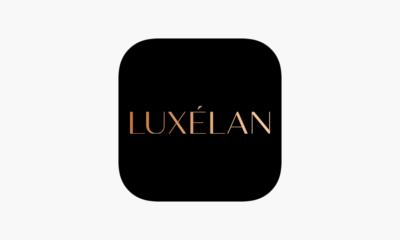
 tech11 months ago
tech11 months agoHomes with AI with Luxelan
-
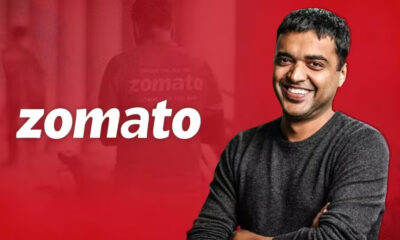
 inspiring11 months ago
inspiring11 months agoThe boy who made it founder of Zomato
-

 Business11 months ago
Business11 months agoTelegram CEO Pavel Durov Arrested in France Amid Inquiry into App’s Moderation Issues
-
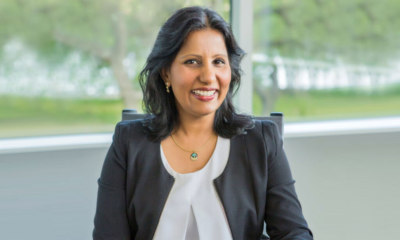
 tech11 months ago
tech11 months agoIt’s okay to fall if you know how to get up : Meerah Rajavel
-

 inspiring11 months ago
inspiring11 months agoprogrammer to a teach giant story of Paul Graham
-
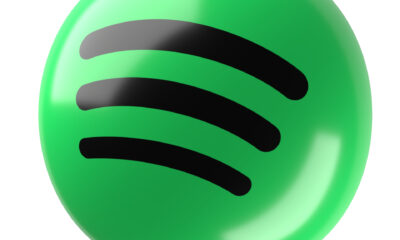
 tech11 months ago
tech11 months agoSpotify From Vision to Global Phenomenon
-
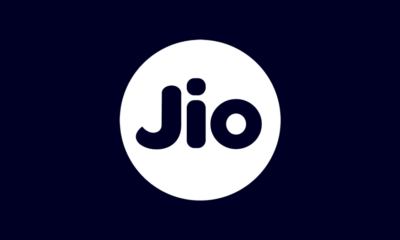
 Business11 months ago
Business11 months agoIndia will no longer be the same again : Mukesh ambani
-

 tech11 months ago
tech11 months agoBlack Forest Labs Elon Musk’s unhinged AI image generator


